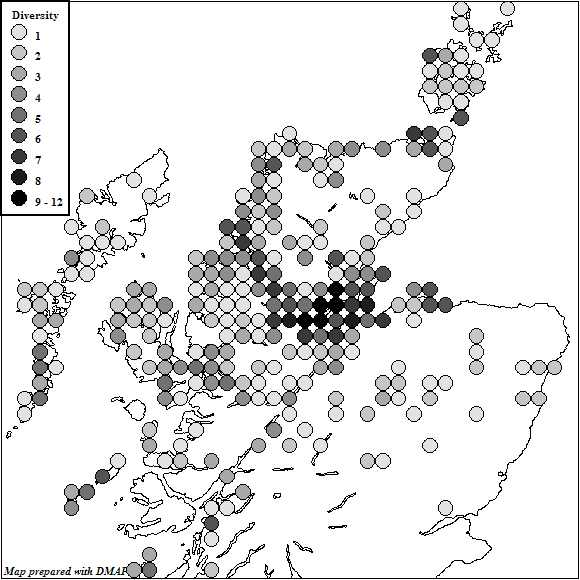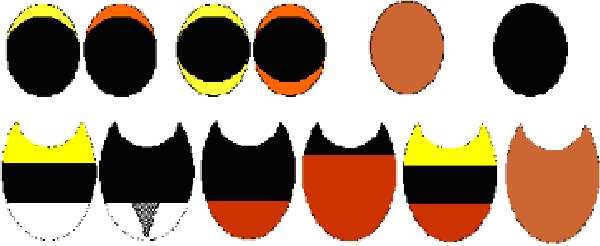 | Caithness.Org | Community | Business | Entertainment | Caithness... | Tourist Info | Site Map |
• Advertising • Chat Room • Contact Us • Kids Links • Links • Messageboard • News - Local & Scottish • News - UK & News Links • About / Contact Us • Submissions |
• Bookshop • Business Index & News • Jobs • Property For Sale • Property For Rent • Shop • Sutherland Business Index |
• Fishing • Fun Stuff • George, The Saga • Horses • Local Galas • Music • Pub Guide • Sport Index • What's On In Caithness |
• General Information • B & Bs • Backpackers • Caravan & Camping • Ferries • Getting Here • Holiday Letting • Hotels • Orkney • Pentland Firth • Sutherland • Taxis |
| N E W S F E E D S >>> |
NATURE AND ENVIRONMENT
Bees
Bumblebees
|
Guide to the Field
Identification of Highland Bumblebees This gives a guide to females of the species of Bombus and Psithyrus found in the Highlands and Islands. Prys-Jones & Corbet (1987), Naturalists' Handbook 8, CUP (there is a more recent edition published by Richmond), should be used for confirmation. It has excellent colour plates of all species. Males are easily recognised in many species by having a yellow face, and always by their longer (13 segmented) antennae, blunt abdominal tip, and no sting. Males will key out correctly for some species (marked *), and others can be recognized by obvious similarities to their females once these are known. Normally, males are only produced from late summer. Colours refer to the hairs, unless otherwise stated. Thorax = body section which carries wings and legs. Abdomen = last section. Key A: Is it a bumblebee (including
the parasitic cuckoo bees Psithyrus)? Key B: Main bumblebee colour groups
2a Tail (end of abdomen) brown,
orange or red. Key D Key C: Abdomen mainly brown,
lacking any clear black or yellow bands. 2a Thorax deep foxy red contrasting
with pale abdomen. Abdomen with no black hairs at sides. Islands, mainland
machair or moorland; rare except on islands. This is very difficult to
identify with certainty. Specimens should be kept if it is suspected. B.
muscorum Key D: Tail (end of abdomen) brown, orange or red. 1a Body entirely black, except for
the red tail. Widespread now in coastal areas from Nairn to Tain, and west
to Strathpeffer. (The similarly coloured B. ruderarius occurs on Coll and
Tiree, but there are no recent records from Highland. Its pollen baskets
are red, not black.) [Males with yellow face and yellow on thorax.] B.
lapidarius 2a Three yellow bands (2 on thorax,
1 on abdomen, see note 1), tail buff to orange. Western Isles and Shetland
only. *B. jonellus sspp. 3a Most of abdomen reddish orange.
Mainland only, usually on moor or mountain; widespread, but generally
uncommon and possibly decreasing. All records of this very distinctive
species should be reported. *B. monticola 4a Two rather dark brownish-yellow
bands, tail pale buff to brown. Very rare in N. Scotland, but has recently
colonised the Moray Firth area as far as Cromarty. All records of this
species should be reported. *B. terrestris Queens Key E: Tail white or slightly off-white 1a Three yellow bands (2 on thorax,
1 on abdomen). See note 1. 2 2a Face noticeably long and narrow,
tongue very long. Common in many habitats throughout the area, including
gardens. *B. hortorum 3a Two yellow bands, at front of
thorax and front of abdomen. This group comprises 4 spp. which are very
difficult to distinguish. 4 4a Yellow of collar extends well
below the wing base. Widespread, and associated with moorland and machair;
particularly common on the west and on the islands. (This is sometimes
considered to be conspecific with B. lucorum, and males can not be
distinguished.) B. magnus 5a Yellow on abdomen broken by a
band of black hairs (but often this break is not conspicuous). Widespread
on the mainland, but scarce and overlooked. [Males with tail white to
reddish-brown.] This is very difficult to identify with certainty.
Specimens should be kept if it is suspected. B. soroeensis 6a Tail pure white, with no trace
of a brown line at the base. Yellow bands bright. The most abundant
2-banded white-tailed bee in the area; absent from the Western Isles and
Shetland, but recently found in Orkney. [Males very variable, often very
yellow.] B. lucorum 7a A small yellow mark at each
front corner of the white tail patch (often very faint). Common on the
eastern mainland, rare in the west and on Orkney. Breeds in lucorum nests.
[Males sometimes with yellow tail.] *P. bohemicus Note 1. It is sometimes difficult for beginners to decide whether a bee has 1 or 2 bands on the thorax, as the hinder band (scutellum) appears to run into the abdominal band. The easiest way to tell at first is to see the bee at rest. If there is a band immediately in front of the wing bases, there are 2 thoracic bands; otherwise only 1. Bumblebee biology - Unlike hive bees, bumblebee colonies are annual. The first bees to appear in spring are the queens which have hibernated after being fertilised the previous autumn. They forage to stock a nest, and lay their eggs. Once the workers hatch, they take over the foraging and the queen then spends most of her time in the nest. Later in the year she begins to lay unfertilised eggs which develop into males, while some of the fertililised eggs produce new queens. The males spend a few happy days drinking and mating with any young queens they find. Eventually, all except the young mated queens die, and these find a burrow to hibernate until spring. Identification - The common species can be recognised in the field with a little practice. Most reasonably diverse gardens in the area will have at least 4 species regularly (up to 7 in the east), so familiarisation is fairly convenient. The key points are the number of yellow bands, and the colour of the tail. Use the status comments in the key for guidance when learning the common species. For example, 99.99% of bees with brown abdomens on the mainland will be B. pascuorum; a black, red-tailed bee in Inverness is overwhelmingly likely to be lapidarius, but on the west coast you would have to consider ruderarius; a 3-banded bee in a town garden is almost certainly hortorum, but on heather moor is more likely to be jonellus. If you are unsure of the identification, please say so, perhaps explaining your doubts in the comments column, or sending a specimen. Bumblebees can easily be caught for a close look in a small clear plastic box. This can be very useful when learning the species. Males do not sting, so if you are sure, use your fingers! Even females are usually very reluctant to sting, and with practice can be handled safely. In some circumstances it may be necessary to take specimens. This should be done sparingly, and for queens only in exceptional cases. Workers and males, especially in the late summer and autumn are more expendable. They can be killed in the freezer, and then dried in air if they are to be kept for an extended time. A freshly dead bee in a closed box creates an astonishingly powerful stench as it decays! Bees are often found dead or dying of disease, trapped in greenhouses, or poisoned by nectar under Lime trees Tilia. Specimens can be sent to me with the usual details as they are collected, or at the end of the season. Hints for finding bees - Bumblebees are active from mid-March to mid-October. Of the common species, lucorum and pratorum are first to emerge; hortorum and pascuorum last. By October only lucorum and pascuorum are significantly active. Gardens are very good hunting grounds, as are hedges with Raspberry and Bramble (Rubus spp.), and meadows with high densities of pea family plants.
Current coverage of bumblebee
mapping in the Highlands and Islands (1988-2000). Shaded dots show 10 km
squares with at least one record since 1988. The darker the dot, the more
species recorded. A statement of the current records for particular 10km
squares (this will be the mapping unit), or for Vice-counties, can be
provided if you send me a stamped addressed envelope. Please let me know
if you wish to take responsibility for a group of squares so that effort
is not unnecessarily duplicated. Records from Lochaber, inland squares of
Caithness and Sutherland and upland areas will be especially welcome. Simple colour key to Highland
bumblebees (Bombus and Psithyrus)
A
B
C
D AU - soroeensis, lucorum, magnus,
terrestris |



 The
different species have characteristic favourite forage plants which can
make it very easy to find particular species. B. pratorum is very much
associated with Rubus thickets, especially in the west where it is quite
uncommon. B. hortorum is addicted to Foxgloves. B. jonellus feeds from
July onward on Erica and Calluna. Sowthistle Sonchus clumps by the shore
are very attractive to terrestris and lapidarius. I have obtained a large
number of records of all five species, for little effort, by stopping at
suitable plants by the roadside - sometimes not even getting out of the
car! In late summer clumps of thistles attract males which sit about in a
drowsy stupor. They are worth examining even in damp weather as the bees
are often found cold and unable to fly. On one cold, wet July day I went
to South Sutor in a square which had NO recent records, and in 20 minutes
found 8 species, only one of which was actually flying!
The
different species have characteristic favourite forage plants which can
make it very easy to find particular species. B. pratorum is very much
associated with Rubus thickets, especially in the west where it is quite
uncommon. B. hortorum is addicted to Foxgloves. B. jonellus feeds from
July onward on Erica and Calluna. Sowthistle Sonchus clumps by the shore
are very attractive to terrestris and lapidarius. I have obtained a large
number of records of all five species, for little effort, by stopping at
suitable plants by the roadside - sometimes not even getting out of the
car! In late summer clumps of thistles attract males which sit about in a
drowsy stupor. They are worth examining even in damp weather as the bees
are often found cold and unable to fly. On one cold, wet July day I went
to South Sutor in a square which had NO recent records, and in 20 minutes
found 8 species, only one of which was actually flying!






